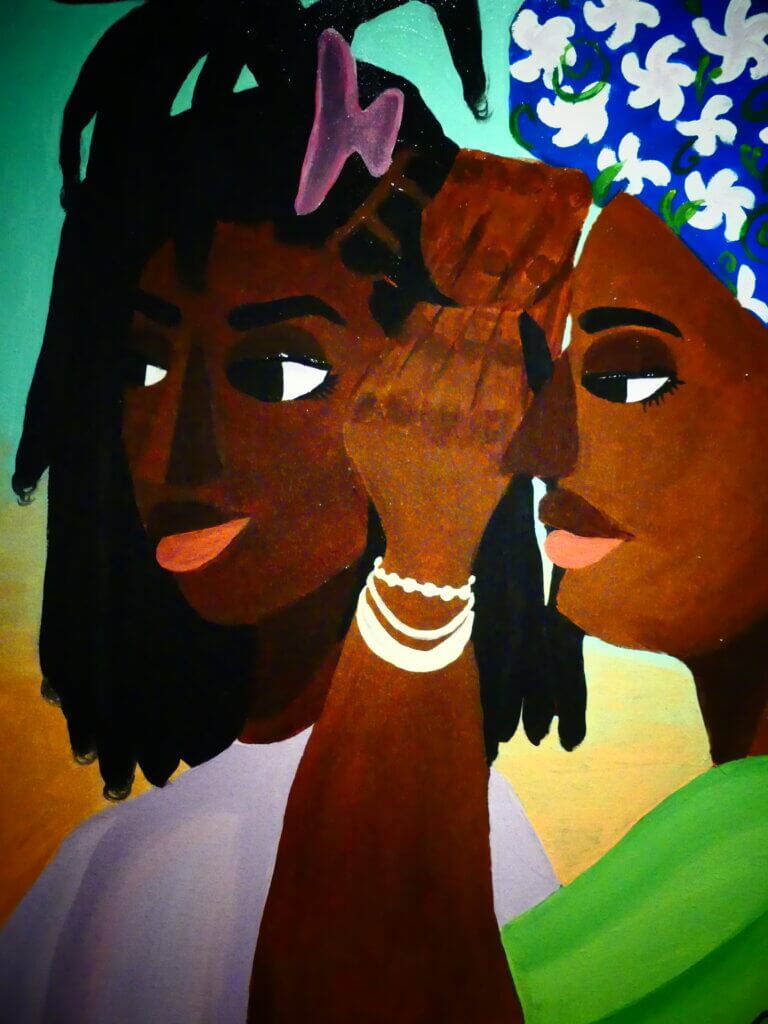I visited the Museum of the African Diaspora and was uplifted by the incredible expressivity on display throughout the entire museum—from the art in the galleries to the informational placards that dot the walls. The museum staff that I encountered were fabulous as well, and certainly abetted my wonderful experience.
The first exhibit I soaked up was Spectrum: On Color & Contemporary Art. The exhibition focused on how artists use color to convey meaning. Blue, I read in an informative wall text written by the museum, is a “fugitive” color. It is more susceptible to subtle environmental factors and is therefore more ephemeral than other colors. The gallery contains the work of 17 artists, and questions how their use of color guides their viewers’ perceptions.

I could hear the distinctive tones of Jay-Z’s Black Album combined artfully with The Beatles’ White Album as I made my way around the gallery. I followed the intriguing music to the Toni Rembe Freedom Theater, where Tony Cokes’ 2004 video installation, Pause was underway. In the piece, the music underscored snatches of text about criticism and the mechanics of success scroll across screens containing bright and also monochromatic strips. The sensitive interplay of all of the video’s elements had my attention gripped. I cruised out of the theater once I had my fill, feeling new and fresh.
Next on my visit was Salimatu Amabebe’s SON. It was a touching and very personal showcase exploring memory, among other themes. The deep red carpeting and walls surround the artist’s work, suggestive of blood and its thickness. A video is projected on one wall. The artist’s dad and his two sons– the father is teaching his sons to dance. Later in the video, two figures dance in two different scenes. Around the space, the artist cast various items in pewter, like a ribbed tank (of the style worn by his father in the video), to save them in perpetuity.
I then ventured upstairs to see Text Messages, a show curated by Erin Jenoa Gilbert and featuring the work of Bay Area artist JoeSam. His work tackles some of the heavy issues facing Black people, like police brutality and the hideous legacy of minstrelsy. Per the show’s name, each work makes use of text to highlight the meanings of the pieces. Made with found objects from the streets of California and composed in a riveting way, the works are highly emotive.
MoAD Teens 2023: Old Roots, New Leaves is the museum’s first youth-led exhibition. It features the artists of teenagers in the Bay Area who have close ties to other places throughout the African diaspora, and was curated by ten youth artists. The art in this showcase is vibrant and offers insight into the lives of the artists in a profound way.

When I got home, the indefatigable inspiration of the museum continued. I went online to explore the musuem’s current virtual exhibition, The Only Door I Can Open: Women Exposing Prison Through Art and Poetry, which is on display via MoADs website.
The Museum of the African Diaspora is open Wednesday through Saturday from 11:00 am to 6:00 pm, and on Sundays from 12:00 pm to 5:00 pm. Tickets are available for purchase here.
